COVID-19 is exposing holes in leadership-think and business systems, it's time to adapt or die.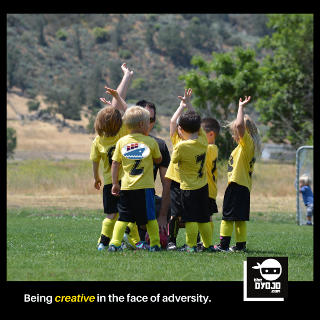 When I coached soccer for young kids, every season a unanimous point of contention was running. Ask any coach, if the kids are acting up, “Just make them run.” While conditioning is an essential component of the sport, it’s trite how often running is utilized as a disciplinary tool as well. On the other side of the ball, what do players complain about, “Why do we have to run so much?” I knew it was my role as a coach to teach these kids the fundamentals of soccer and to help them be competitive in our matches, but I understood quickly that if we could make the process enjoyable we would get much further in reaching our goals. Don’t get me wrong, I used to love it when kids whined about conditioning, I would ask, “If you don’t like to run, why did you pick soccer.” Some of them would reply, “I didn’t, my mom is making me play.” Touché. If we put ourselves in the young players mindset, they just spent the day at school sitting in a classroom getting lectured about things many of them are not interested in. They see an open field and their friends and they want to play. As coaches, we decided that we didn’t want to make running a constant punishment, we wanted the kids to enjoy the sport. Yet, we probably ran more than most teams in our league. How you phrase the conversation with affect you ability to implement changesAs we navigate the working world with COVID-19, I can’t help but see some parallels with the above scenario and the discussions around companies attempting to navigate their staff working remotely. I hear several employers contemplating aloud whether employees can be as productive working from home as they are working from the office. We will break some of this down, but one piece of the puzzle I would like to present to those in a position of leadership is how you phrase the conversation. In my coaching days, I discovered a very simple drill. The kids would gather into two lines with one coach in the middle. Coaches would throw a soccer ball as far as they could and the players would run to retrieve it and then scrimmage one-on-one the whole way back. The players literally sprinted to get the ball, they worked on footwork with opposition on the way back and everyone was gasping for air by the time our drill was done. Cardio, skills and scenarios in one simple drill. No one complained about having to run because the running was wrapped into an exercise that we were all doing together. We accomplished quite a bit by being creative. Working remotely is something every company should be experimenting with for the purpose of attracting young talent, providing options to retain existing talent and developing resiliency. Even prior to the novel coronavirus (SARS-CoV-2) outbreak, in the Pacific Northwest there have been many talks about a Cascadia earthquake event as well as other emergency scenarios which should have sparked remote work conversations. The world is changed and your only path to success is forwardThis pandemic is changing our lives and our economy. Life will not be the same once we flatten the curve and develop solutions to COVID-19. So many companies are making bad press for themselves with the public and with their employees through their haphazard actions. As a person in a position of leadership, you will never please everyone, but you must lead. This pandemic is exposing holes in systems worldwide that were not being tightened up because we were all prospering. Now that things are rapidly changing it is time to make adaptations that should have happened long ago. Communication is key. I am thankful that in Tacoma, Washington, the Chamber of Commerce and the Economic Business Development, among others, have been holding tri-weekly updates on facts and resources for local businesses. No one has all of the answers and we are putting this puzzle together one piece at a time. Setting up company updates about:
If you aren’t listening to your employees, you may be missing out on some key opportunities for collaboration and ideas that could save your business. Your concerns about remote work are with your systems not your people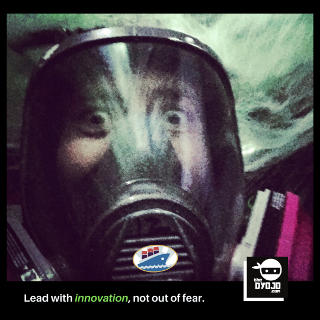 There are companies that already have significant portions of their workforce working remotely. I know of one technologically savvy company in the real estate space that provides parameters as well as freedom for their agents. This company has “peak hour” requirements where employees are required to keep a certain amount of their day/week open in those time frames when clients have the most need for service. A process like this demonstrates that the company has a firm grasp on what their clients needs and habits are as well as a means to align their workforce with that business stream. Even before coronavirus, as a person in a position of leadership, you should be asking whether your current process aligns your workforce with your client needs. A common objection to working from home is that employees won’t be as productive. Somehow, people in a position of leadership believe that employees sitting at a desk where they can be observed are somehow more productive. This is like sleeping with the light on when you are scared. It’s ridiculous. If there really is a threat, the presence of a 60 watt bulb will not stop a monster, nor does the “watchful eye” of a “trained manager” increase worker productivity. Setting your team up for success by creating a measurable processI am intentionally not including sources to support my position, if you feel strongly about working from home then you will find research that will support your position (confirmation bias) one way or the other. My contention would be that sitting at a desk is a piss poor metric for productivity. If you are that leader, my questions would be:
In my experience, the same people who judge productivity by butts in seats are the same companies that have no real systems for performance evaluation or improvement. Now is the time to get real about what a productive employee looks like in your organization. When I was coaching, it was the same thing there, coaches would brag about how often their kids ran because they were misbehaving. Many of them had terrible teams full of players who didn’t enjoy the sport and had no passion for learning. Too often as coaches or people in a position of leadership we blame the employee or the player. Soccer is supposed to be fun. It’s a hard game but it’s a blast if you can learn to improve a few key skills. Business as well is fun, it is a blast to land a contract, build relationships and see your team thrive. Now, more than ever, is a time for people in a position of leadership to step upLeaders need to lead. Crisis has a way of exposing the flaws in our systems. If you are resting on what you accomplished in the past or how you did things even a week ago, you aren’t leading and your company will die. Embrace innovation but understand it doesn’t have to be something crazy, going back to our simple “running” drill - it had a purpose, touched on key performance points and we all had fun doing it. Business can be this same way. With a little bit of thought, some clarity on expectations for this new world and a willingness to adapt as you all learn together, businesses can make some win-win scenarios that will keep talent as well as help them chart a path forward. What are you doing to create clarity, consistency and accountability in these key areas?
0 Comments
Improving your property restoration business through consistent optimization efforts.“When setting expectations, no matter what has been said or written, if substandard performance is accepted and no one is held accountable—if there are no 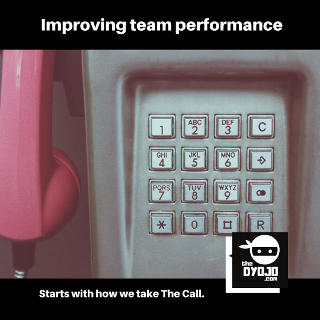 This article was featured as part of our monthly column The Intentional Restorer (volume 3) with Restoration and Remediation Magazine (R&R). Whether your career path started in property restoration or in some other industry, you know what it is like to work you way up from an entry level position to where you are now. You remember what it is like to have something go wrong and to be blamed for that result. The typical approach in hierarchical management systems is for the blame to “roll downhill”, right? But, as a person in a position of leadership (at whatever level you find yourself), you have committed yourself to reaching for higher purpose for yourself as well as your team. It’s so much easier to maintain the status quo. Yet, with the rate of change and the demands in the market, you know that doing things the way we’ve always done them is a rapid path to obsolescence. Change is painful but death is permanent. Doing the hard things of turning something around or improving your system requires commitment to work through obstacle after obstacle and to consistently progress through opposition. The battle for improvement is never over, you rise and grind only to wake up and do it again. Elevate performance by clarifying expectationsDedicated leaders, like yourself, understand that assigning blame is not a strategy for success when working to improve your internal processes. You understand that as a leader, “The buck stops here,” with regards to accountability for making progress in the process. Developing your team to embrace a growth mindset, that will lead to sustained competitive production, requires intentional leadership. Long term success follows a sequence of clarity, consistency and accountability.
As an example for how this process plays out, let’s take a look into a typical day for a property restoration team. We will identify some of those core issues that hold teams back from reaching their goals, discuss potential solutions and then apply those concepts to your business. Quiet on set, begin scene: Team Leader, we will call him Charles, asks his business mentor, “How do we get our technicians to fill out their paperwork consistently, thoroughly and on time?” “How often do you provide your technicians with clear and consistent paperwork before they arrive on a job site?” Business Mentor, we will call her Shirley, responds to the question with a question. “What are you talking about? These are emergencies we are responding to.” Charles clearly thinks Shirley has lost her marbles. “Whether you are responding to an emergency or facilitating a repair, isn’t your client intake process the same?” Shirley feels the indignation but does not respond to it. “What does that have to do with my technicians not doing their job?” Charles is ready to throw Shirley out of the building. “The best way to build accountability in vision and values is to demonstrate them from top to bottom.” Shirley calmly presses forward. “Oh, so it’s my fault now? I’m the reason my technicians don’t do their paperwork consistently and on time?” Charles stretches his hand towards the shoulder of Shirley. “Before you throw me out of the building, let’s look at a few things...“ Building team accountability starts with leadership executing their responsibilitiesHow consistent and thorough are your project assignments? Does your organization provide clear enough details to your front line employees to set them up for success when responding to a work assignment? Too often we use the excuse that we respond to emergencies to allow us to generate unclear work scopes. Where does the process of clear scope and expectations begin? You know the answer--it begins with whomever is taking the phone call. Resource: We dealt with the 5 layers of consistent customer communication in an article with Restoration & Remediation Magazine How often do you receive unclear details from a client?
Does unclear data cost your business time, resources and profitability? Yes. The process of clear communication through complete, thorough and timely paperwork starts with your investment in the process of receiving project information. You cannot control when a lead comes in but you can control how thoroughly you gather information. This is important so that no one on your team is wasting time duplicating efforts to get the information that should have been received when the call came in. You may not know all the details for an emergency but if you have enough data we can prepare your team to respond with the appropriate people power, equipment and materials. You know that there is a big difference between responding to a sink overflow in a laundry room on the main floor with no crawl space and a busted sewer line in the crawl space of a 5,000 square foot home. The technicians who are trained to respond, the equipment and resources that will be needed as well as the ability to estimate how that team being offline for the project will impact your ability to respond to other losses are all important. Improving profitability starts with clarifying your internal processConsistency in your paperwork starts with details gathered at the time a call for a new project is received (intake).
Consistency in your process will fuel improvements in your productionThe details will make or break a well documented loss that will enable you to get paid for your work on an insurance claim. The details of your process and the workflow consistency will make or break your ability to elevate your teams performance. When you master the most basic functions of your organization it builds momentum for tackling more complex issues within your process. When you detect negative symptoms in your business, such as a lack of thoroughness in the project documentation from your team members in the field, it should cause you to seek the root sources. It sounds simple and yet it when these things are not practiced there are negative ripples throughout the organization. When you commit to taking calls with clarity and consistency you demonstrate to your team that you value this process and that everyone is being held to the same standard. You can begin to eliminate chaos in your organization and build positive momentum by intentionally developing your process. Too often teams under utilize their receptionist and allow their salespeople to get away with maneuvering around the rules. When you build clarity and consistency you establish purpose for each person in your organization. When you stand up for these principles, as change will always be tested, you prove your commitment to the cause. Steps for improving employee performanceIf you want to motivate your property restoration employees to higher quality performance and expect consistency from your technicians:
Check out our video on this topic - Garbage In, Garbage Out (Part 1) - The Call. 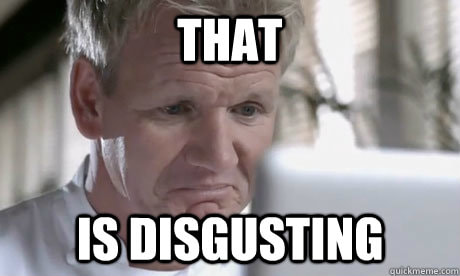 Core values help you to define and gain momentum on your vision Core values help you to define and gain momentum on your vision Business leaders need to clarify their values to enable their teams to achieve success. While there are many things that make Gordon Ramsey unique and successful, his keys to helping businesses succeed have a few key principles. Gordon Ramsey is back in the saddle, taking nightmare kitchens and working his magic to help them down the road to success. This newest version is called 24 Hours to Hell and Back, Wednesday nights at 9 PM on FOX. They say cleanliness is next to godliness, but many people don’t care about godliness anymore so cleanliness must be rapidly approaching the top spot. It is not coincidence that the first principle of success, and antithetically to failure, is that of the simple commitment to cleanliness. If you have rats in your kitchen, you may have given up. How much skill and effort does it take to keep rats, cockroaches, ants and other rodents out of a commercial kitchen? While there may be a cute Disney movie about the potential skills of certain rodents, the restrauntuers that Gordon works with have not discovered Remy. “Disgusting.” In episode 1 of 24 Hours to Hell and Back, the kitchen staff are caught on tape cracking jokes about the rats running through the kitchen. Success, like cleanliness, requires elbow grease. You have to be willing to see what is wrong and consistently work to keep the commitment to a sanitary kitchen on lock. If your cold storage is full of rotten meat, you may have given up. Whomever does the scouting for the businesses for Chef Ramsey to transform must make the walk-in one of their first stops. Prior to this undercover version, Gordon would arrive at a restaurant and order nearly everything on the menu. It was surprising how many business owners didn’t shut down their own operation and just start clearing out their gross cold-storage. Perhaps the only thing more surprising than the disgusting kitchen is just how many people are oblivious of these conditions or that it’s a problem. If your team doesn’t follow basic sanitary principles, you may have given up. If you are new to the Gordon Ramsey Kitchen Nightmare scenario, you will soon learn that no one is safe from Gordon’s ire. As he burrows into the issues he demonstrates a skill for sniffing out the issues that are often obvious but that those in a position of leadership have been unwilling to address. Regardless of the pile up, Chef Ramsey will get around to the owner and remind them that if this transformation is going to last they have to get their will and their skill back into their business. The culture and results of the restaurant are measures of the applied influence of the owner. When the owner has given up that standard filters through all operations. There is a great video of a speech by Navy Seal Admiral William McRaven who remarks, “If you want to change the world, start off by making your bed.” He elaborates that by making your bed every day you build discipline while starting your day off with a simple accomplishment to set the tone. Build your pursuit of success one habit at a time. Growth is often the result of several small steps rather than giant leaps. Similarly, Gordon Ramsey brings a giant spotlight into failing businesses and points to aspects such as cleanliness that should be very obvious. Whether your train has fallen off the rails and you need to right your course or you building your team towards the goal of consistently making progress, the simple discipline of cleanliness should not be lost. These principles are keys for leading yourself as well as leading others and building teams. IZ Ventures - more than business coaching and consulting, we help you connect, collaborate and conquer.
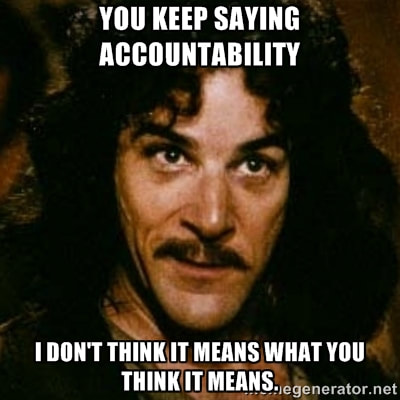 How many times do you hear, “Someone needs to hold so-and-so accountable for their actions”? And the peanut gallery nods their head vehemently in agreement, “That’s right, it’s about time that so-and-so was held accountable for such-and-such.” People in a position of leadership (PIAPOL) are often fond of the peanut gallery, those that cheer them on in the execution of the leadership duties. Funny enough, the history of the peanut gallery comes from days past and referred to the cheapest tickets where the rowdiest vaudeville consumers heckled the performers. Needless to say, those in a position of leadership who only seek “yes men” to affirm their ever action seek the praise of those who are not fueled by vision or invested in progress. Magnified Plaid, or MxPx as they have come to be known, is a indie punk rock band from Bremerton, Washington and they have a fitting song entitled Responsibility, the chorus of which belts out, Responsibility? What's that? Responsibility? Not quite yet. Responsibility? What's that? I don't want to think about it; we'd be better off without it. If you like rock music with a splash of humor then you may find some enjoyment is viewing the video for MxPx Responsibility - see at end of article. It may also help serve as a sensory cue to invest in your accountability measures for your team, a rally cry of sorts. For many organizations, the attitude is the same with regards to a practical or effective approach to accountability. Leaders talk about accountability as though the only measure of such is a good tongue lashing, preferably in front of as large a group of people as possible. So, let’s see if we can answer the what, when and how of establishing accountability. Accountability? What’s that? “If you are building a culture where honest expectations are communicated and peer accountability is the norm, then the group will address poor performance and attitudes,” says speaker and author of Necessary Endings, Dr. Henry Cloud. There is a progression in accountability, it does not appear out of thin air or materialize on its own. Accountability for a person and an organization comes from consistency in executing clearly established values. Effective accountability traces itself back to clarity in vision, communication of values and consistent effort from all levels within the team to live out those principles. As we have discussed many times, there are causes and there are effects or there are symptoms and there are sources, leaders are concerned with finding sources so that they can eliminate symptoms. Accountability is the natural consequence of consistency rooted in clarity and conversely a lack of accountability is the natural consequence of inconsistency that stems from a void in institutional clarity. For an organization to build accountability they must clarify their vision and consistently communicate, train and discipline around their values. If an organization says they value A and B and yet they hire candidates that value C or have leaders who believe in D then that organization cannot expect A and B to be communicated clearly, executed consistently or accountability measures to be effective. As Dr. Cloud notes above, there is a beauty to developing a culture because one of the fruits of a clear culture is that those invested in the vision will enhance accountability by setting a standard and holding people to it. Accountability? Not quite yet. Consistency means doing what you have said regardless of the obstacles or the opposition. How many positive efforts die before they ever grow legs, before they are ever put in motion and how many more die the minute there is opposition. Those in a position of leadership are tasked with the responsibility to identify and implement programs, systems and changes that will grow their team. The best ideas don’t have to be complex or innovative to move a vision forward but they will have to be combined with commitment and endurance. Changes, especially those that net long term results, require energy and resources, they will cost money, time and will have to adapt to the path that unfolds but they should not die because someone decides they aren’t comfortable with change or don’t want to put the work in to see something through. The peanut gallery cheers as long as they are not challenged, they heckle like petulant children when they don’t like something but they are not of the character to get in the trenches and move a team forward so their opinions should not be given value by those who are leading an organization from vision to action. When those in a position of leadership allow obstacles to deter them or fold under the pressure of internal opposition to change they send a clear message that their resolve isn’t set to defend their values. “A person who refuses to say ‘the buck stops here’ really isn’t a leader at all,” notes Dr. Travis Bradberry, author of Emotional Intelligence 2.0, “Being a leader requires being confident enough in your own decisions and those of your team to own them when they fail.” Leaders must be open to input where those engaged in the mission are sharing insights of repute but complaining by those who want to defend the status quo should be quelled. A quick test to determine whether someone is complaining or providing constructive criticism is to simply ask, “Before you finish your statement – 1) if you are bringing me a problem are you also bringing me a solution and 2) if you believe you have a solution are you willing to put your skin in the game to see it through?” If the answer to either of these questions is no then it is a complaint and the person in a position of leadership should move on, quickly. No further discussion. (More on accountability – Conflict) Accountability? What’s that? Many organizations have vision and value statements but how many actually follow those words from top to bottom and from bottom to top? When an organization is clear on their vision and those in a position of leadership are consistent in their values and together they recruit, hire, train, discipline and build around those core items then there is a foundation for accountability (Video on discipline). Discipline is a key component of accountability. Yet, discipline is not just about yelling at people who aren’t doing their job or sending people home, or like one organization we worked with having a naughty board posted prominently in their employee center so that the record of team members failures could be observed by all, rather accountability flows from consistency and clarity. Patrick Lencioni, the author of The Five Dysfunctions of a Team, shares, “The best kind of accountability on a team is peer-to-peer. Peer pressure is more efficient and effective than going to the leader, anonymously complaining, and having them stop what they are doing to intervene.” The kind of accountability that Cloud and Lencioni talk about is of the type that we hear about in championship sports teams where captains from within the team, as well as the team as a whole, buy into the vision and hold each other accountable. When an organization brings people in that enhance the culture, people of value are inspired. When a person in a position of leadership stands up to opposition and silences complainers, people of value are invigorated. When the team is clear about the vision and consistently executes the values the key ingredients are in the soil for a culture of accountability to flourish (More on culture). I don’t want to think about it. We’d be better of without it. It’s so much easier to maintain the status quo. Yet, with the rate of change and the demands in the market, status quo is the most rapid path to total failure. Change is painful but death is permanent. Doing the hard thing of turning something around requires commitment to work through obstacle after obstacle and to consistently progress through opposition after opposition only to wake up and do it again. No more so-and-so needs to do such-and-such. Clarity. Consistency. Accountability. |
AuthorThoughts on personal and professional development. Jon Isaacson, The Intentional Restorer, is a contractor, author, and host of The DYOJO Podcast. The goal of The DYOJO is to help growth-minded restoration professionals shorten their DANG learning curve for personal and professional development. You can watch The DYOJO Podcast on YouTube on Thursdays or listen on your favorite podcast platform.
Archives
March 2023
Categories
All
<script type="text/javascript" src="//downloads.mailchimp.com/js/signup-forms/popup/unique-methods/embed.js" data-dojo-config="usePlainJson: true, isDebug: false"></script><script type="text/javascript">window.dojoRequire(["mojo/signup-forms/Loader"], function(L) { L.start({"baseUrl":"mc.us5.list-manage.com","uuid":"b9016446bd3c6a9f0bd835d4e","lid":"83282ffb9e","uniqueMethods":true}) })</script>
|
Jon Isaacson |
Connect. Collaborate. Conquer.
© COPYRIGHT 2015. ALL RIGHTS RESERVED.
|





 RSS Feed
RSS Feed